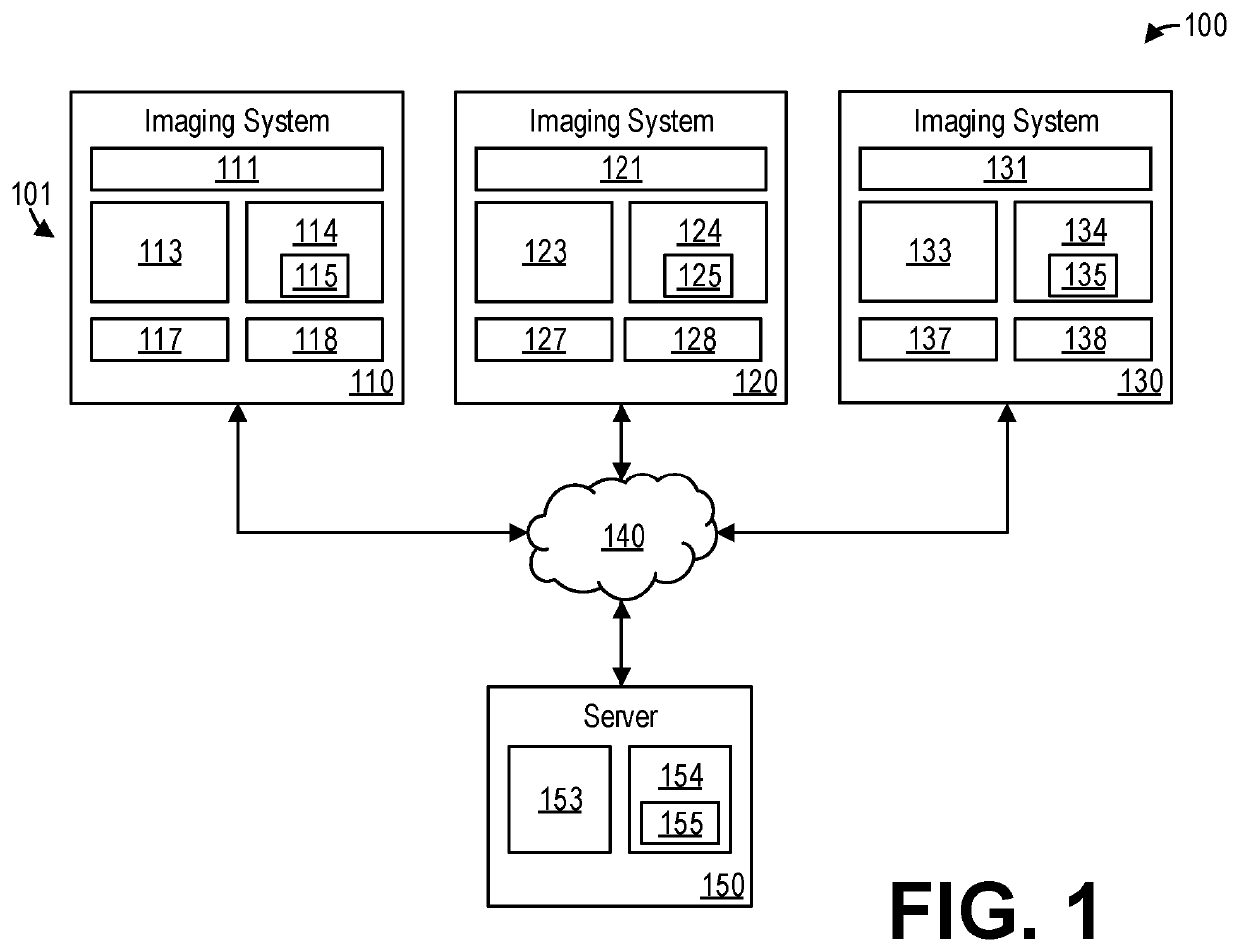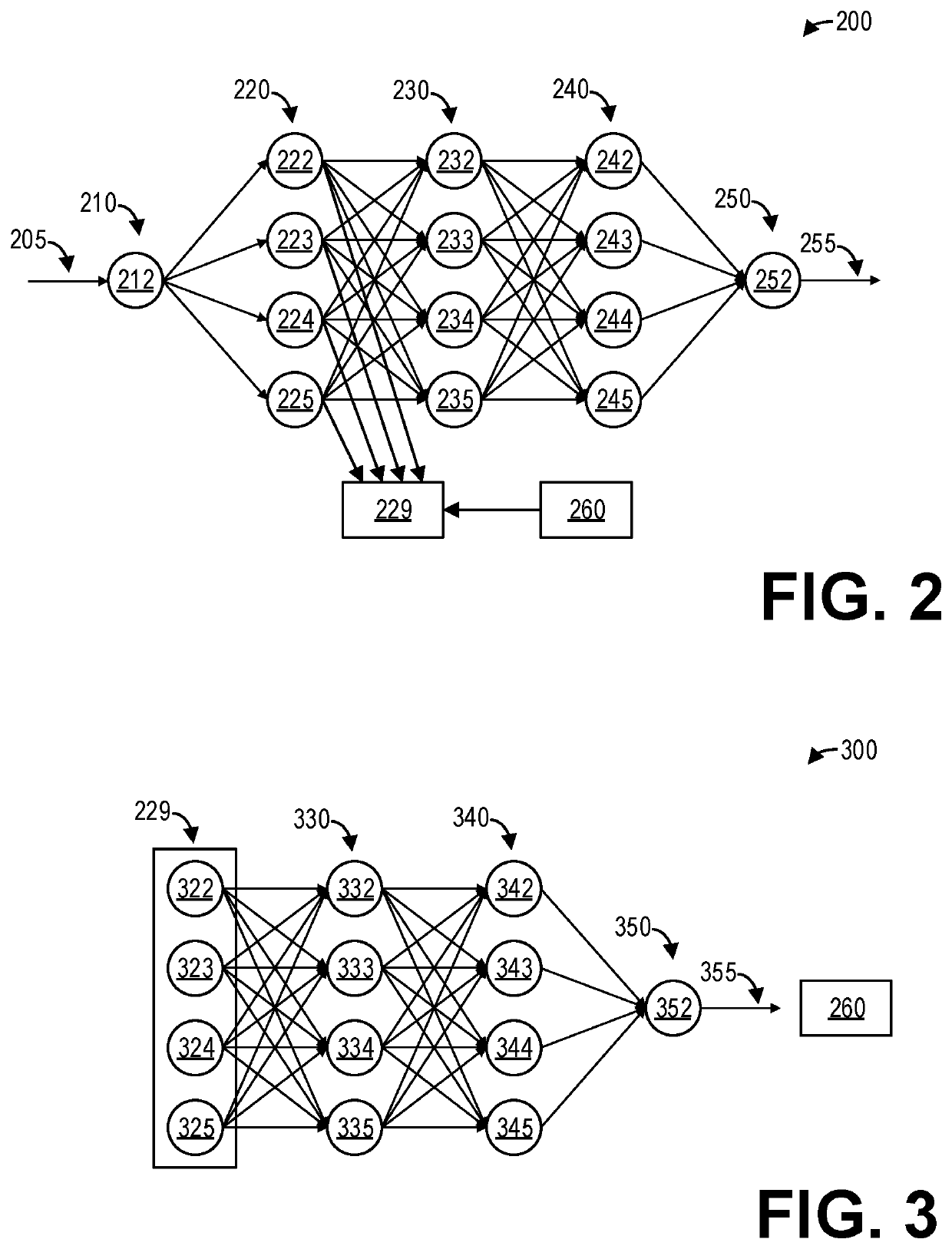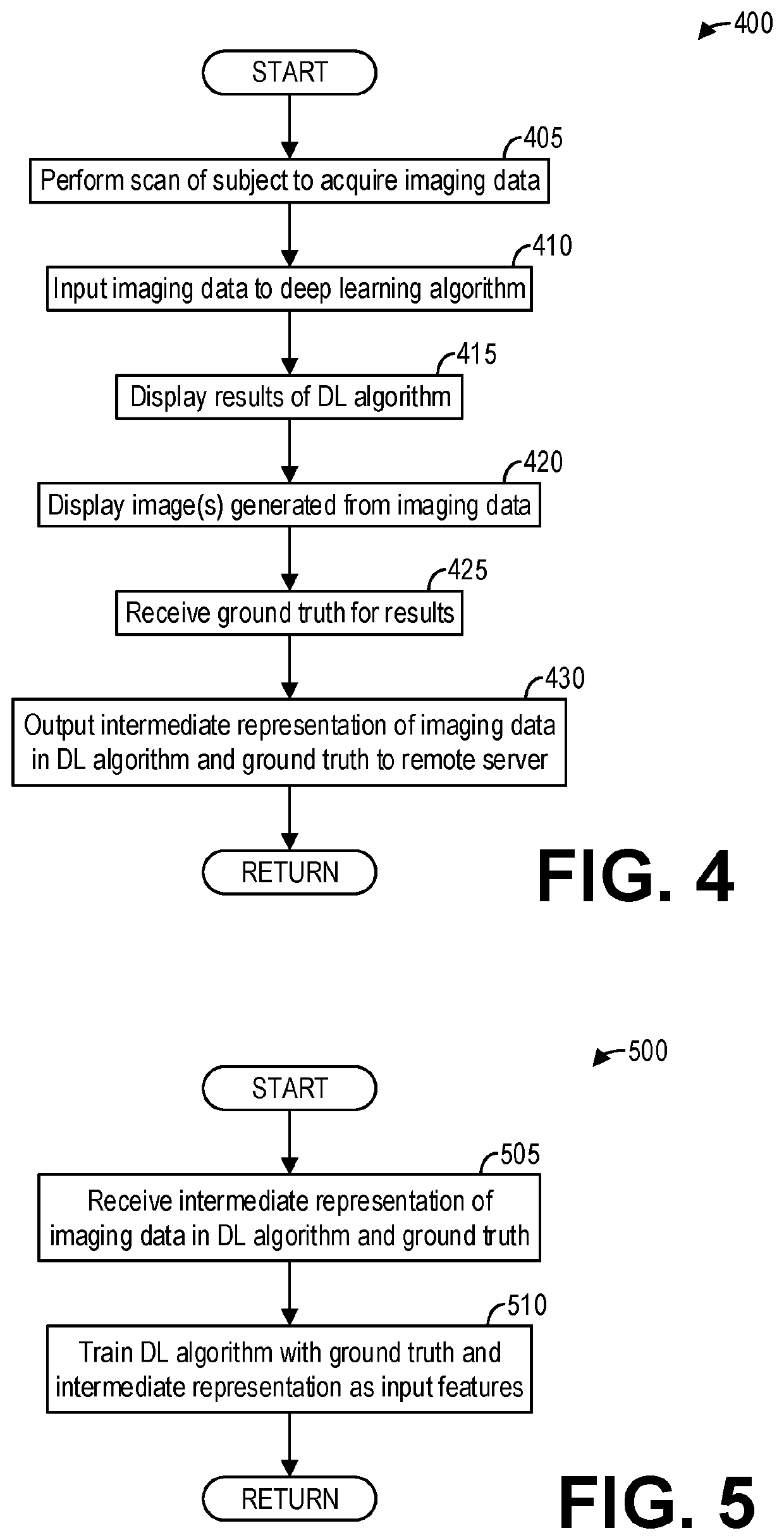Systems and methods for capturing deep learning training data from imaging systems
a deep learning training and imaging system technology, applied in the field of non-invasive diagnostic imaging, can solve problems such as the difficulty of leveraging these improvements for other imaging systems, and achieve the effect of preserving patient privacy
- Summary
- Abstract
- Description
- Claims
- Application Information
AI Technical Summary
Benefits of technology
Problems solved by technology
Method used
Image
Examples
Embodiment Construction
[0014]The following description relates to various embodiments of non-invasive diagnostic imaging. In particular, systems and methods are provided for collecting training data from one or more imaging systems for training a central deep learning algorithm. An example system that may be used to collect deep learning training data from a plurality of imaging systems is provided in FIG. 1. A deep neural network, such as the deep neural network depicted in FIG. 2, installed in an imaging system generates an intermediate representation of imaging data. A deep neural network, such as the deep neural network depicted in FIG. 3, installed in a central server uses the intermediate representation of the imaging data as input features. A method for generating training data, such as the method shown in FIG. 4, includes transmitting the intermediate representation and a ground truth from the imaging system to the server. A method for training a central deep learning model, such as the method sho...
PUM
 Login to View More
Login to View More Abstract
Description
Claims
Application Information
 Login to View More
Login to View More - R&D
- Intellectual Property
- Life Sciences
- Materials
- Tech Scout
- Unparalleled Data Quality
- Higher Quality Content
- 60% Fewer Hallucinations
Browse by: Latest US Patents, China's latest patents, Technical Efficacy Thesaurus, Application Domain, Technology Topic, Popular Technical Reports.
© 2025 PatSnap. All rights reserved.Legal|Privacy policy|Modern Slavery Act Transparency Statement|Sitemap|About US| Contact US: help@patsnap.com



